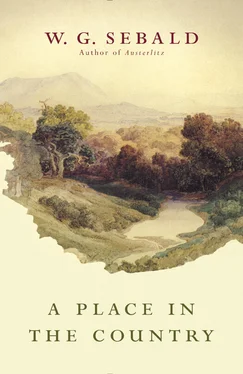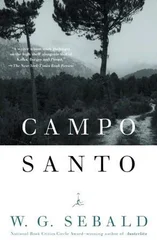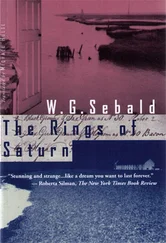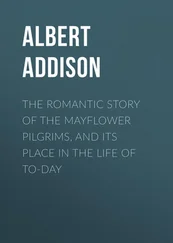Winfried Sebald - A Place in the Country
Здесь есть возможность читать онлайн «Winfried Sebald - A Place in the Country» весь текст электронной книги совершенно бесплатно (целиком полную версию без сокращений). В некоторых случаях можно слушать аудио, скачать через торрент в формате fb2 и присутствует краткое содержание. Год выпуска: 2013, Издательство: Hamish Hamilton, Жанр: Публицистика, Критика, на английском языке. Описание произведения, (предисловие) а так же отзывы посетителей доступны на портале библиотеки ЛибКат.
- Название:A Place in the Country
- Автор:
- Издательство:Hamish Hamilton
- Жанр:
- Год:2013
- ISBN:нет данных
- Рейтинг книги:3 / 5. Голосов: 1
-
Избранное:Добавить в избранное
- Отзывы:
-
Ваша оценка:
- 60
- 1
- 2
- 3
- 4
- 5
A Place in the Country: краткое содержание, описание и аннотация
Предлагаем к чтению аннотацию, описание, краткое содержание или предисловие (зависит от того, что написал сам автор книги «A Place in the Country»). Если вы не нашли необходимую информацию о книге — напишите в комментариях, мы постараемся отыскать её.
, he reflects on six of the figures who shaped him as a person and as a writer, including Jean-Jacques Rousseau, Robert Walser and Jan Peter Tripp.
Fusing biography and essay, and finding, as ever, inspiration in place — as when he journeys to the Ile St. Pierre, the tiny, lonely Swiss island where Jean-Jacques Rousseau found solace and inspiration — Sebald lovingly brings his subjects to life in his distinctive, inimitable voice.
A Place in the Country
A Place in the Country — читать онлайн бесплатно полную книгу (весь текст) целиком
Ниже представлен текст книги, разбитый по страницам. Система сохранения места последней прочитанной страницы, позволяет с удобством читать онлайн бесплатно книгу «A Place in the Country», без необходимости каждый раз заново искать на чём Вы остановились. Поставьте закладку, и сможете в любой момент перейти на страницу, на которой закончили чтение.
Интервал:
Закладка:
What is remarkable about this passage is the way in which Keller’s prose, so unreservedly committed to earthly life, attains its most astonishing heights at precisely those moments where it reaches out to touch the edge of eternity. Anyone traveling along this path as it is unrolled before us, sentence after lovely sentence, over and over again senses with a shudder how deep is the abyss on either side, how sometimes the daylight seems to fade as the shadows gather from afar and often is almost extinguished by the suggestion of death. There are many passages in Keller which could pass for the work of a baroque poet of mortality and vanitas . We need only think of Zwiehahn’s wandering skull in Heinrich’s luggage, the little ivory skeleton on the table of the Landvogt von Greifensee, and the poet’s mania for collecting, which sees him furnishing almost all his stories with a kind of treasure chest (or Schatzkästlein ), in which, as in the cabinets of curiosities and jewel caskets of the seventeenth century, the most improbable relics coexist side by side: a “cherry stone carved with the passion of Christ, and a box made of filigree ivory inlaid with red taffeta, containing a little mirror and a silver thimble; further … another cherry stone wherein rattled a tiny game of ninepins, a walnut which when opened revealed a little image of the Virgin behind glass, a silver heart with a small perfumed sponge inside, and a bonbonnière made of lemon peel
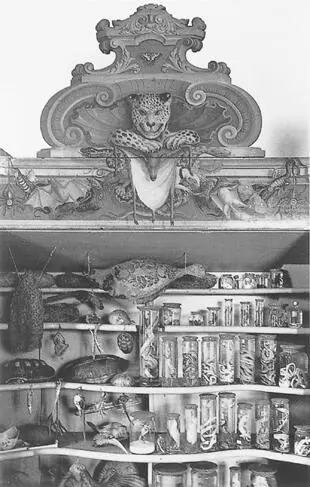
with a strawberry painted on its lid, containing a golden pin on a piece of cotton in the shape of a forget-me-not, and a medallion with a monument of hair; further, a bundle of yellowed papers with recipes and secrets, a bottle of Hoffmann’s drops, another of eau de Cologne and a box with musk; another with a scrap of marten dropping in it, and a little basket plaited from fragrant palm leaves, as well as one made of glass beads and cloves; finally a little book with silver edges bound in sky-blue ribbed paper and entitled Golden Rules of Life for the Young Woman as Bride, Wife and Mother , and a small book of dreams, a guide to letter writing, five or six love letters, and a lancet for letting blood.” We find all of this in the story of Die drei gerechten Kammacher [ The Three Righteous Combmakers ], in a lacquered chest belonging to Züs Bünzlin, which Wolfgang Schlüter, in his essay on Benjamin as collector, refers to as a microcosmic intérieur . If the baroque imagination, which we see here once more dwelling upon the insignificant trifles we fashion and hoard during our brief time on earth, itself already embodied a kind of vogue for death, then its afterlife, as shown to us by Keller in this miniature world within a world belonging to a Swiss spinster, is determined by a narrative position which, as Wolfgang Schlüter writes, is circumspect even in its mockery, and whose underlying ironic perspective — as Schlüter also notes — is derived not from distance but from painfully focused images viewed from the closest possible proximity. For this reason it would be wrong to see Keller as a latter-day preacher of death and damnation in disguise, even though there can be no doubt that his inspiration derives from the baroque tendencies still latent within him. What is unique about Keller’s philosophy of transience is the serene glow with which it is suffused, stemming from the particular brand of Weltfrömmigkeit [secular piety] the young scholar from Zurich had become acquainted with during his time with the Heidelberg atheists. There were few things Keller could abide less than the self-righteous authority of religion, nothing he loathed more than the bigotry that seeks to wield the rod to make of poor little Meret an honest Christian child. This liberation from the age-old prison of religion is what lets in the light which he sees illumining even the darkest hours. There can scarcely be a brighter eulogy than Heinrich’s funeral oration for his young cousin Anna, who passed away long before her time. When the carpenter is rubbing down her newly finished coffin with pumice, Heinrich recalls, it becomes “as white as snow, and only the very faintest reddish touch of the fir shone through, giving the tint of apple blossom. It looked far more beautiful and dignified than if it had been painted, gilded, or even brass-bound. At the head, the carpenter had according to custom constructed an opening with a sliding cover through which the face could be seen until the coffin was lowered into the grave; now there still had to be set in a pane of glass which had been forgotten, and I rowed home to get one. I knew that on top of a cupboard there lay a small old picture frame from which the picture had long since disappeared. I took the glass that had been forgotten, placed it carefully in the boat, and rowed back. The carpenter was roaming about a little in the woods looking for hazelnuts; meanwhile, I tested the pane of glass, and when I found that it fitted the opening, I dipped it in the clear stream, for it was covered with dust, and clouded, and with care I succeeded in washing it without breaking it on the stones. Then I lifted it and let the clear water run off it, and when I held up the shining glass high against the sun and looked through it, I saw three boy-angels making music; the middle one was holding a sheet of music and singing, the other two were playing old-fashioned violins, and they were all looking upward in joy and devotion; but the vision was so thinly and delicately transparent that I did not know whether it was hovering in the rays of the sun, in the glass, or merely in my imagination. When I moved the glass, the angels instantly vanished, until suddenly, turning the glass another way, I saw them again. Since then I have been told that copperplate engravings or drawings which have lain undisturbed for a great many years behind glass communicate themselves to the glass during these years, in the dark nights, and leave behind upon it something like a reflected image.” The solace Heinrich derives from this chapter of his life story has nothing to do with hope for eternal bliss, as might perhaps initially appear to be the case. The angels with their gaze turned heavenward are only an illusion, virtual vignettes giving the appearance of a miracle which is in fact merely the result of a chemical reaction. Rather, Keller achieves this reconciliation with death in a purely earthly realm: in the satisfaction of work well done, in the snowy gleam of the fir wood, in the peaceful boat journey across the lake with the pane of glass, and in the perception, through the gradually lifting veil of mourning, of the beautiful clarity, undimmed by any hint of transcendence, of the air, the light, and the pure shining water.
This attachment to earthly life is borne out by the fact that nowhere in these stories of Keller’s does the desire for redemption emerge more clearly than in the repeatedly imagined evocation — quite contrary to Keller’s own experience — of the consummation of love. Just as Heinrich, on his nocturnal walk with Judith, listens eagerly to the rustle of her dress and every few moments feels the need to glance furtively across at her “like a fearful pilgrim at whose side walks a specter of the woods,” so, too, Keller’s gaze, as he writes, is always directed at the unknown and mysterious nature of woman, who only becomes truly familiar to him as a figment of the imagination. The scenes in which the lovers are united, which he pictures in such loving detail, are not only among the most touching in literature; they are unique, too, inasmuch as in them desire is not immediately betrayed by the fixed masculine gaze. It says much that in Keller’s work the true lover is barely more than a child — for example, the young Heinrich Lee in the chapter in which, locked in the theater overnight, still wearing his monkey costume and with Mephistopheles’ cloak around his shoulders, he wanders around by moonlight on the stage amid all the rustling paper splendors, raising the curtain, and in the orchestra pit, at first tentatively and then with increasing force, begins to make the kettledrums roll until finally a veritable crescendo of thunder echoes through the darkened auditorium and rouses the beautiful actress who shortly before has breathed her last upon the boards. “It was Gretchen, just as I had last seen her,” thus Lee’s account in his recollection of his theatrical adventures as a monkey: “I shuddered from head to foot, my teeth chattered, and yet at the same time a powerful sensation of joyful surprise flashed through me and made me glow. Yes, it was Gretchen, it was her spirit, although the distance was too great for me to distinguish her features, making the apparition seem even more ghostly. With mysterious gaze, she appeared to be searching the hall; I pulled myself upright, I was drawn forward as if by powerful, invisible hands, and, my heart beating audibly, I stepped over the benches toward the front of the stage, pausing at every step. The fur covering muffled my footsteps so that the figure did not notice me until, as I climbed up to the prompter’s box, the first moonbeam fell like a streak across my strange costume. I saw how she fixed her glowing eyes on me, horrified, and then shrank back in alarm, but silently. I trod one quiet step nearer, and halted again; my eyes were opened wide, I held my trembling hands aloft while, a glad fire of courage running through my veins, I made for the phantom. Then it called out imperiously: ‘Halt! You little creature, what are you?’ stretching out its arms threateningly against me so that I stood still, rooted to the spot. We looked fixedly at each other; I recognized her features now. She was wrapped in a white nightdress, her neck and shoulders were bare and gleamed softly, like snow by night.” Adolf Muschg has said of Keller that it would have required a miracle of empathy and consideration to overcome the feelings of social and physical inferiority from which he suffered. This scene in the theater presents us with just such a miracle. The actress removes the little creature’s mask, enfolds him closely in her arms, and kisses him repeatedly on the lips, because, as she says afterward, he has not yet become the rogue he will turn into later, just like all the others, once he has grown up. The tender consummation of this childlike desire for love is soon followed by a scarcely less easeful death. Gretchen takes the monkey into her bed, where the two fall peacefully asleep, she shrouded in a royal velvet cloak and Heinrich sewn into his fur costume, thus bearing, as the narrator says, no small resemblance to those monumental tombs “where a knight of stone lies at full length, his faithful dog at his feet.” The vision here is of the body turned to stone at the moment of utmost happiness, a petrifaction which is a symbol not of punishment or banishment, but an expression of the hope that the moment of supreme bliss might last forever. Another, scarcely less peaceful end seems assured for the tailor Strapinski, far from home in Switzerland, when, his secret having been revealed by the charade acted out by his Doppelgänger , filled with a sense of shame he walks out into the winter night where presently, overcome by “the fiery drinks consumed and his grievous stupidity,” he sinks down by the side of the road and falls asleep “on the crisp frozen snow, while an icy wind begins to blow from the east.” Wenzel Strapinski’s rescue from an already certain death, as Keller then describes it, runs counter to all the prevailing erotic conventions of bourgeois literary tradition. Whereas, in the Novelle from Kleist to Schnitzler, it is invariably the male hero who, in an attitude of macabre lust, is to be found bending over the unconscious or lifeless body of a woman, in Keller’s tale it is the female gaze of Nettchen which is permitted to rove uninhibitedly over the graceful and noble body of the tailor with his slender, supple limbs and (as it tellingly says) tightly laced form. And when, by means of energetic rubbing, Nettchen finally succeeds in massaging the limp and almost lifeless tailor back to life and he slowly sits up, it becomes abundantly clear that Keller’s erotic longings were directed toward a reversal of the prevailing gender roles as prescribed by society. Possibly for this reason we are informed, in the following passage, that Wenzel Strapinski had, during his time in the military, served with the Hussars and worn one of those splendidly colorful uniforms as sported by that ideal masculine type for which women have pined right up to the twentieth century. The source of Keller’s identification with feminine desire cannot, though, be determined with any certainty. Walter Benjamin believed that “Keller’s gloomy composure is based on the profound equilibrium that the masculine and feminine sides of his being have reached,” arguing that this also relates to the poet’s facial appearance. In this context Benjamin goes on to comment on the history of the androgynous type in Greek antiquity, referring to the figure of Aphroditos — the bearded Aphrodite — and the Argive women whose custom it was to adorn themselves with a false beard on their wedding night. If we look closely at the drawings which Johann Salomon Hegi made of Keller at twenty-one, his eyelids lowered in sleep, with his long eyelashes and uncommonly sensual lips, it is not difficult to agree with Benjamin when he states that the idea of such androgynous faces “brings us closer than anything else to the face of this poet.”
Читать дальшеИнтервал:
Закладка:
Похожие книги на «A Place in the Country»
Представляем Вашему вниманию похожие книги на «A Place in the Country» списком для выбора. Мы отобрали схожую по названию и смыслу литературу в надежде предоставить читателям больше вариантов отыскать новые, интересные, ещё непрочитанные произведения.
Обсуждение, отзывы о книге «A Place in the Country» и просто собственные мнения читателей. Оставьте ваши комментарии, напишите, что Вы думаете о произведении, его смысле или главных героях. Укажите что конкретно понравилось, а что нет, и почему Вы так считаете.
